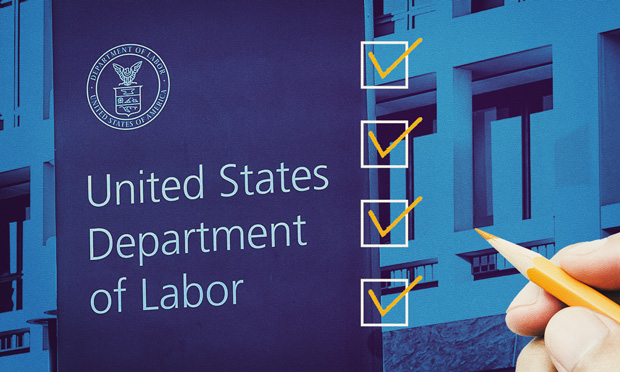
Days after Democrats in the House of Representatives pressed Secretary of Labor Lori Chavez-DeRemer about the ERISA Advisory Council’s lack of required meetings this year, the EAC suddenly released recommendations for the DOL aimed at improving qualified default investment alternatives (QDIAs) in defined contribution plans – one of the topics that was discussed in 2024 EAC meetings.
On June 2, Representative Bobby Scott (D-VA), the ranking member of the House Committee on Education and the Workforce, and Representative Mark DeSaulnier (D-CA), the ranking member of the House Subcommittee on Health, Employment, Labor and Pensions, sent a letter to Secretary Chavez-DeRemer, inquiring why the EAC has not yet held its first meeting this year, when the DOL has yet to convene the first of the four legally required meetings of the Council this year.
Recommended For You
“We were deeply troubled to learn the Department has, without explanation, erased from its website numerous records regarding the Council’s activities in 2024 and reportedly placed the Council ‘on ice,” read the letter.
These actions have called into question the Administration's commitment to upholding its legal obligations under the Employee Retirement Income Security Act of 1974 (ERISA). The lawmakers are requesting that Secretary Chavez-DeRemer explain the Department's actions and clarify the future of the EAC, which advises the DOL on ERISA-related issues.
Additionally, the lawmakers requested the EAC release a document "to the Committee regarding the Council’s 2024 activities regarding … Qualified Default Investment Alternatives (QDIAs) - Start to Finish, Default to Payout,” read the letter to the DOL Secretary.
Late last week, the EAC did release the report, which discusses the effectiveness of QDIAs, which are the default investment in a defined contribution plan, and they becoming increasingly important because of the growing role of auto-enrollment which automatically places participants in QDIAs. They have been effective in helping 401(k) participants achieve age-appropriate investment portfolios, however, no QDIA exists in IRAs.
The EAC has made the following recommendations to the DOL on improving QDIA alternatives.
Related: More ‘qualified default investment alternatives’ in retirement plans: ERISA Advisory Council
No. 1: Issue a “tips sheet” on lifetime income options. The EAC recommended that DOL create either regulatory or sub-regulatory guidance or a “tips sheet” which would “serve as a roadmap” for fiduciaries considering lifetime income options. This “could facilitate greater plan adoption” for lifetime income QDIA options, such as an annuity,” according to the council. The document would focus on how to create a prudent process for selecting a lifetime income QDIA option. At a hearing in 2024, litigation risk was described by several members as a leading factor reducing the use of lifetime income options in QDIAs. This tip sheet is designed to provide guidance that could ease that anxiety for employers.
No. 2: Provide guidance to plan fiduciaries. The EAC recommended that DOL improve the guidance provided to plan fiduciaries related to the QDIA in their plan. Members of the EAC agreed that QDIA disclosures should describe the investments that are in the QDIA in more detail because many participants see a QDIA “perceiving it to be an endorsement” and make no further inquiry, when disclosing the investment breakdown of a QDIA might make them select a different investment.
No. 3: Allow QDIAs in IRAs. The EAC urged the DOL to take a look at QDIAs in IRAs, especially for involuntary rollovers – those funds forced out of a retirement plan into an IRA. Plans are permitted to rollover participant balances to a safe harbor IRA involuntarily if the balance is less than $7,000. However, these rollovers, as well as conventional rollovers, are typically defaulted to cash, which can severely damage the participant’s long-term financial security.
© Touchpoint Markets, All Rights Reserved. Request academic re-use from www.copyright.com. All other uses, submit a request to [email protected]. For more inforrmation visit Asset & Logo Licensing.







